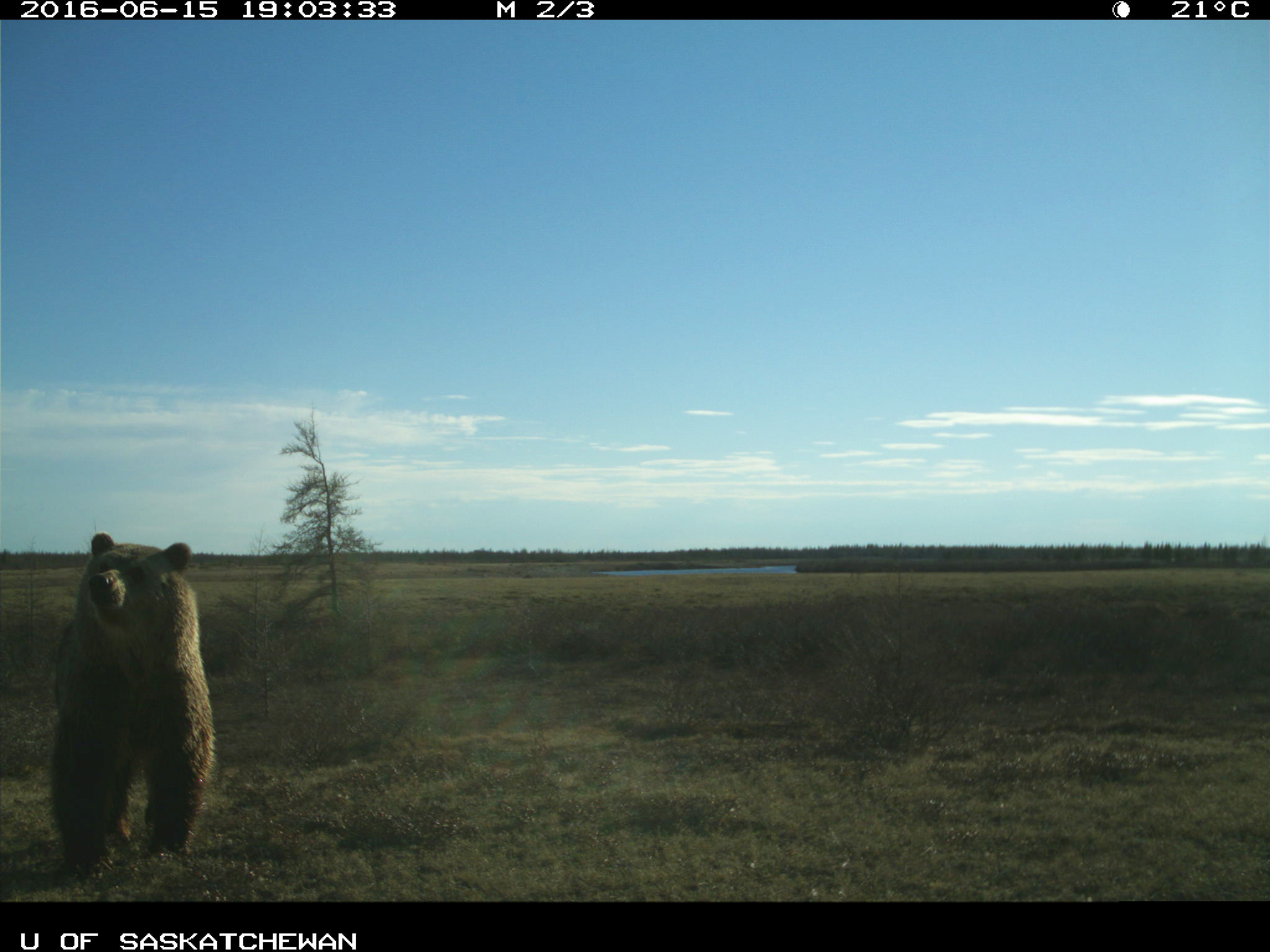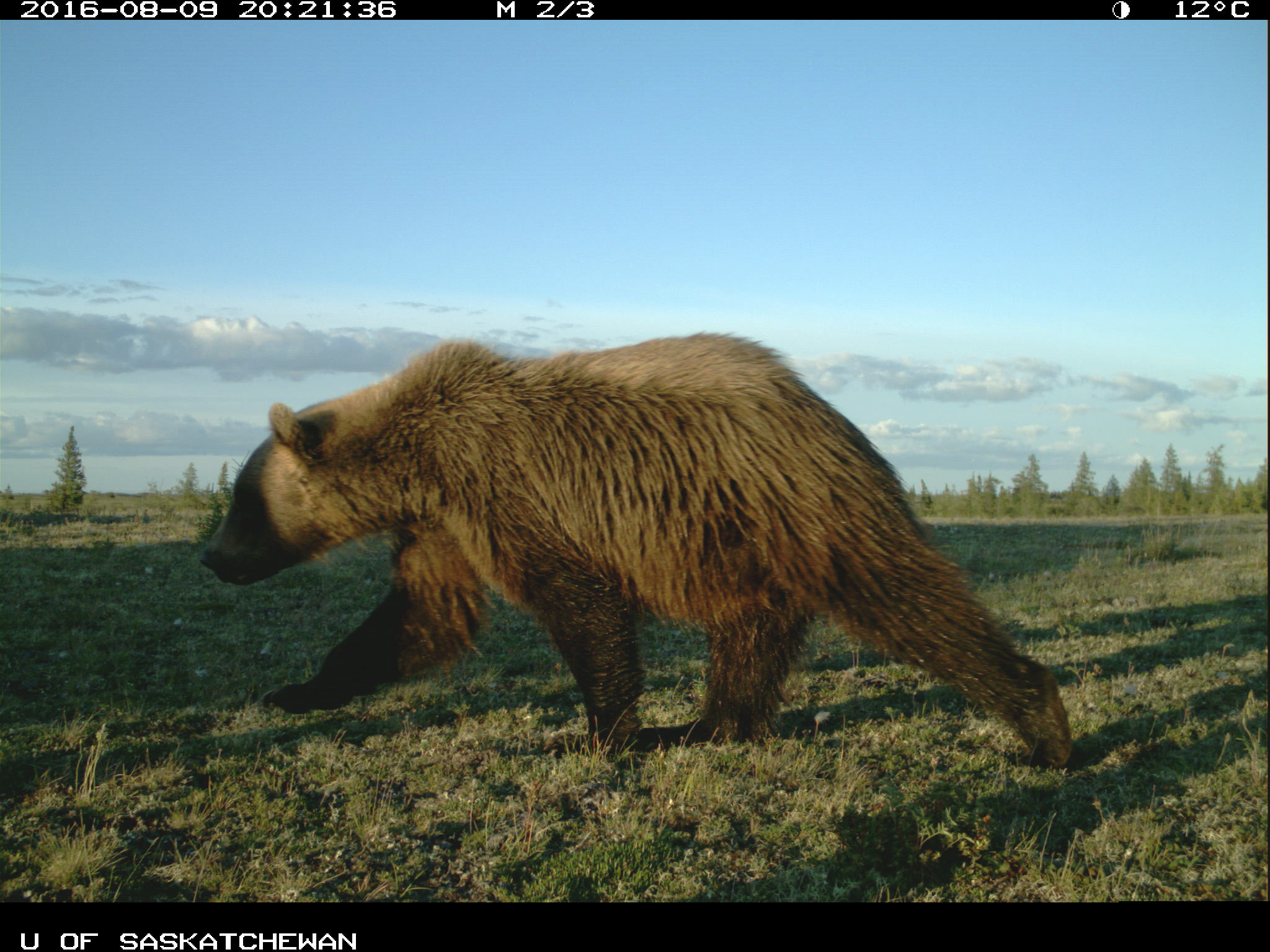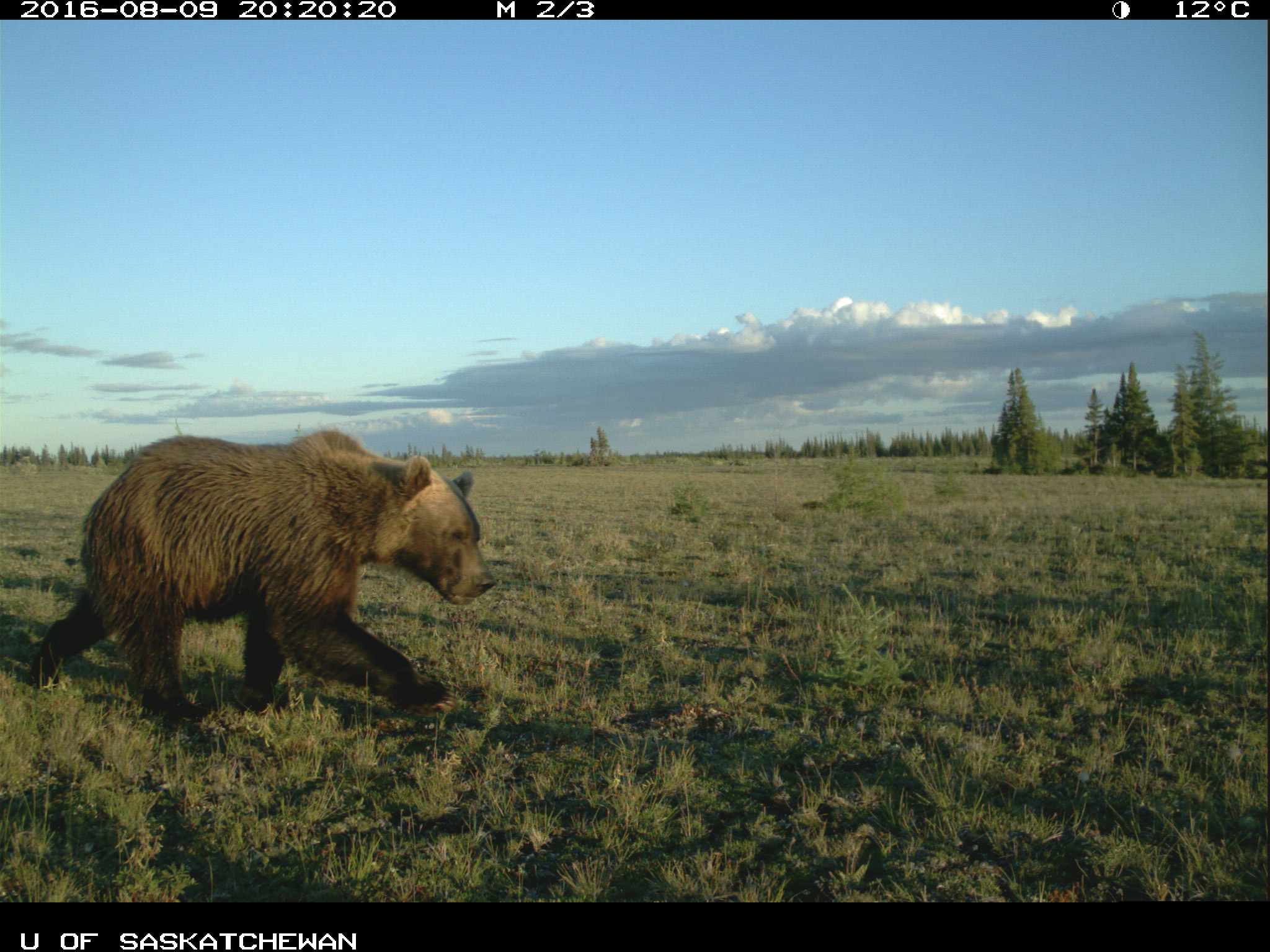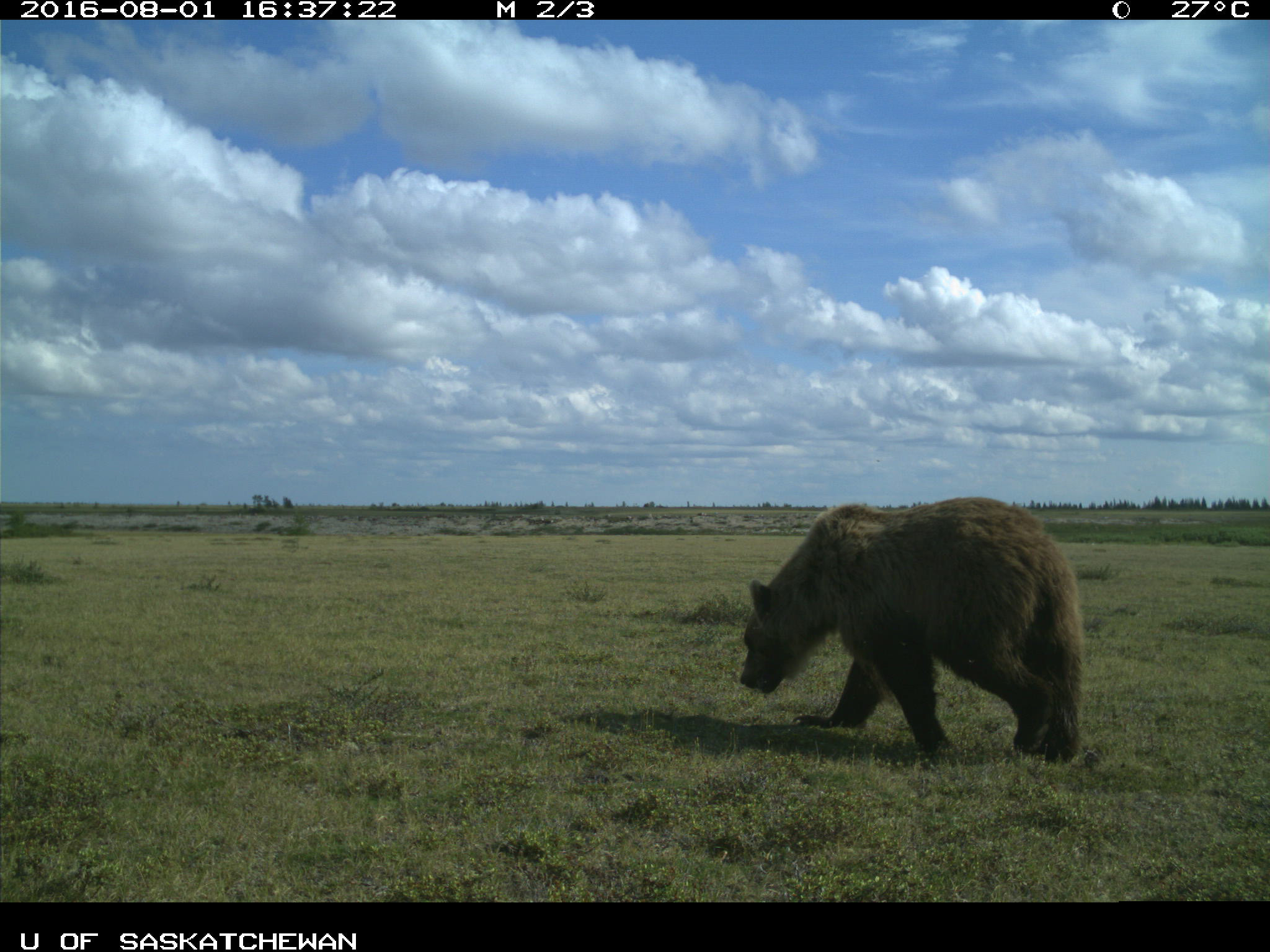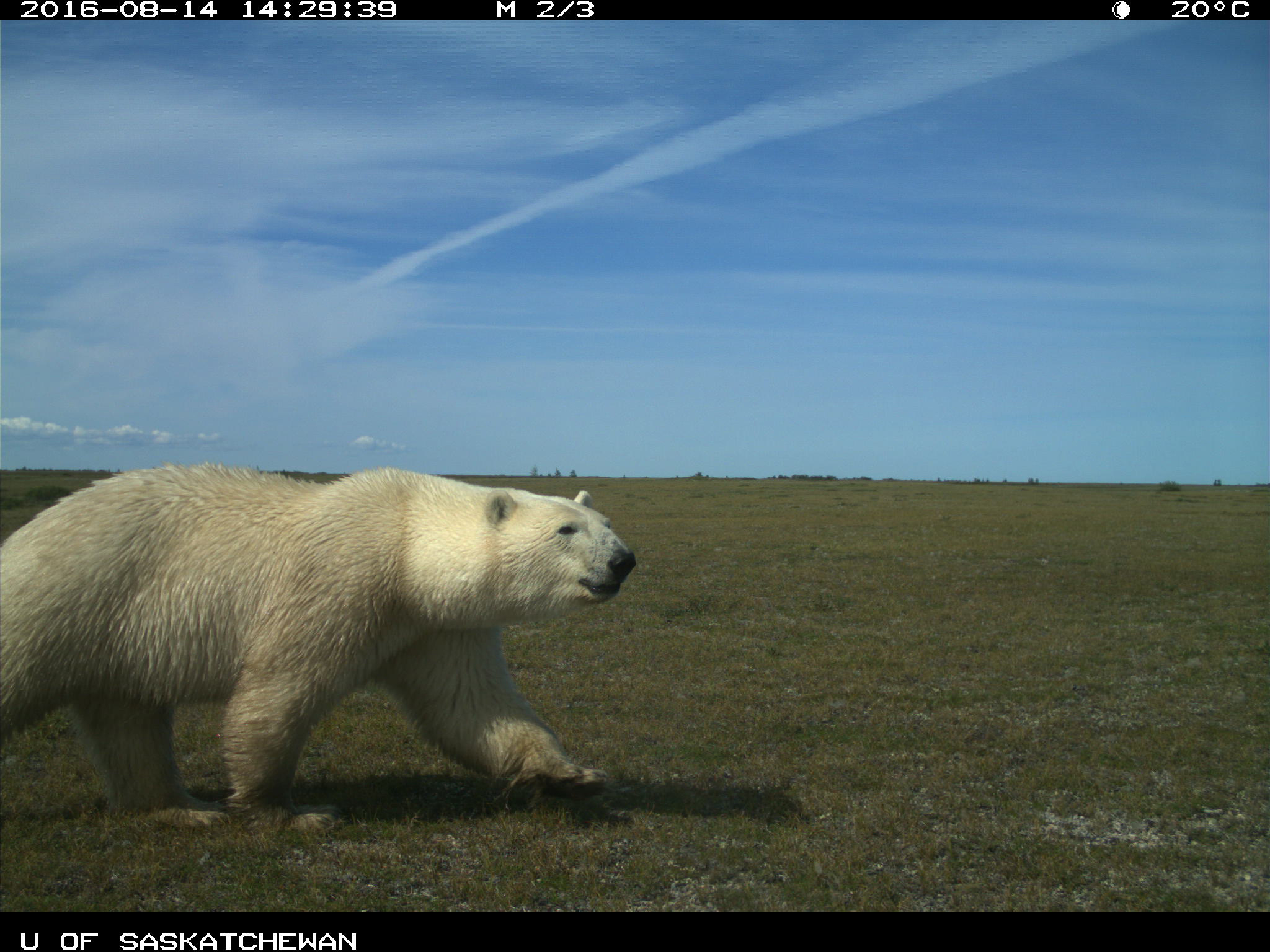The three bears of Wapusk National Park
Wapusk National Park
Wapusk National Park is famous for its high concentration of polar bear maternity dens. However, not many people realize that these polar bears also share their turf with two other bear species - grizzly bears and black bears. This makes Wapusk the only park where it’s possible to see all three species of North American bears!
The polar bear (Ursus maritimus) is the largest living species of bear in the world. Since trail cameras were set out in Wapusk in 2011, they have captured over 350 visits by polar bears at three field camps in every month of the year except May.
Grizzly bears (Ursus arctos) were once thought to be extinct in Manitoba but have been observed in Wapusk since the mid-1990s. Interestingly, the remote cameras have documented a grizzly bear passing by one of the camps within Wapusk on nearly the exact same date each spring three years in a row. The timing suggests that this individual bear might be denning nearby. All sightings have been of single bears, with no cubs.
The smallest of the three species, the black bear (Ursus americanus), has also been captured on remote cameras in the park. Black bears are true omnivores (they eat everything) and have the widest range distribution of any of the bears in North America. They typically inhabit forests but have been observed at camps far out on the tundra in Wapusk. Its name is rather misleading, as black bears can be a variety of colour shades: black, blond, and even cinnamon.
Wapusk National Park is famous for its high concentration of polar bear maternity dens. However, not many people realize that these polar bears also share their turf with two other bear species - grizzly bears and black bears. This makes Wapusk the only park where it’s possible to see all three species of North American bears!
The polar bear (Ursus maritimus) is the largest living species of bear in the world. Since trail cameras were set out in Wapusk in 2011, they have captured over 350 visits by polar bears at three field camps in every month of the year except May.
Grizzly bears (Ursus arctos) were once thought to be extinct in Manitoba but have been observed in Wapusk since the mid-1990s. Interestingly, the remote cameras have documented a grizzly bear passing by one of the camps within Wapusk on nearly the exact same date each spring three years in a row. The timing suggests that this individual bear might be denning nearby. All sightings have been of single bears, with no cubs.
The smallest of the three species, the black bear (Ursus americanus), has also been captured on remote cameras in the park. Black bears are true omnivores (they eat everything) and have the widest range distribution of any of the bears in North America. They typically inhabit forests but have been observed at camps far out on the tundra in Wapusk. Its name is rather misleading, as black bears can be a variety of colour shades: black, blond, and even cinnamon.
Wapusk National Park is famous for its high concentration of polar bear maternity dens. However, not many people realize that these polar bears also share their turf with two other bear species - grizzly bears and black bears. This makes Wapusk the only park where it’s possible to see all three species of North American bears!
The polar bear (Ursus maritimus) is the largest living species of bear in the world. Since trail cameras were set out in Wapusk in 2011, they have captured over 350 visits by polar bears at three field camps in every month of the year except May.
Grizzly bears (Ursus arctos) were once thought to be extinct in Manitoba but have been observed in Wapusk since the mid-1990s. Interestingly, the remote cameras have documented a grizzly bear passing by one of the camps within Wapusk on nearly the exact same date each spring three years in a row. The timing suggests that this individual bear might be denning nearby. All sightings have been of single bears, with no cubs.
The smallest of the three species, the black bear (Ursus americanus), has also been captured on remote cameras in the park. Black bears are true omnivores (they eat everything) and have the widest range distribution of any of the bears in North America. They typically inhabit forests but have been observed at camps far out on the tundra in Wapusk. Its name is rather misleading, as black bears can be a variety of colour shades: black, blond, and even cinnamon.
Wapusk National Park is famous for its high concentration of polar bear maternity dens. However, not many people realize that these polar bears also share their turf with two other bear species - grizzly bears and black bears. This makes Wapusk the only park where it’s possible to see all three species of North American bears!
The polar bear (Ursus maritimus) is the largest living species of bear in the world. Since trail cameras were set out in Wapusk in 2011, they have captured over 350 visits by polar bears at three field camps in every month of the year except May.
Grizzly bears (Ursus arctos) were once thought to be extinct in Manitoba but have been observed in Wapusk since the mid-1990s. Interestingly, the remote cameras have documented a grizzly bear passing by one of the camps within Wapusk on nearly the exact same date each spring three years in a row. The timing suggests that this individual bear might be denning nearby. All sightings have been of single bears, with no cubs.
The smallest of the three species, the black bear (Ursus americanus), has also been captured on remote cameras in the park. Black bears are true omnivores (they eat everything) and have the widest range distribution of any of the bears in North America. They typically inhabit forests but have been observed at camps far out on the tundra in Wapusk. Its name is rather misleading, as black bears can be a variety of colour shades: black, blond, and even cinnamon.
- Date modified :

